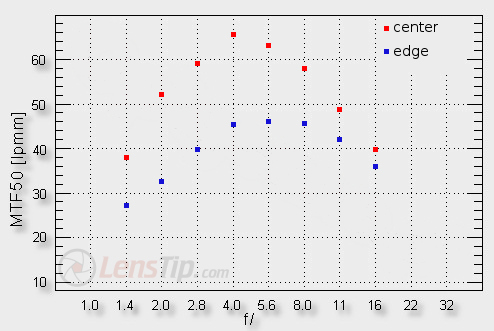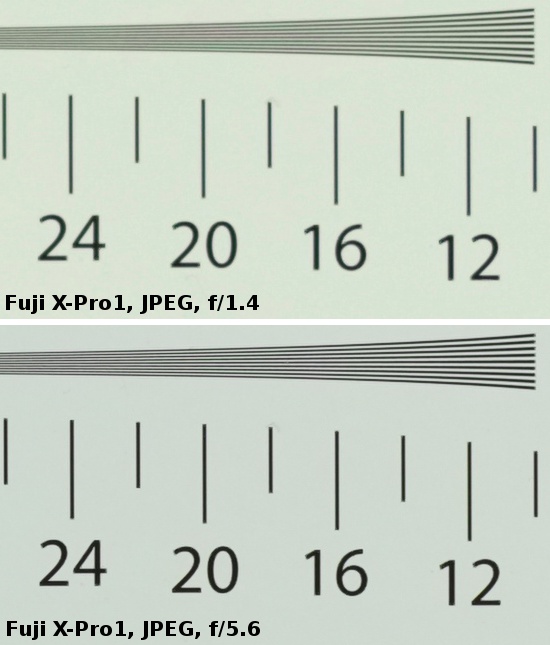Fujifilm Fujinon XF 35 mm f/1.4 R
4. Image resolution
A test of a classic, well-made and meticulously designed standard lens is perfect to assess the real possibilities of the new system, and determine both decency and maximum levels. Let’s check how the Fujinon XF 35 mm f/1.4 R fares.

Please Support UsIf you enjoy our reviews and articles, and you want us to continue our work please, support our website by donating through PayPal. The funds are going to be used for paying our editorial team, renting servers, and equipping our testing studio; only that way we will be able to continue providing you interesting content for free. |
- - - - - - - - - - - - - - - - - - - - - - - - - - - - - - - - - - - - - - - - - - - - - - - -
It is clear that the MTFs of the tested lens can get to the level of 65 lpmm so much higher than those 51-53 lpmm you reach on typical APS-C sensors of 15-16 Mpix class. It is also obvious that by f/16, which usually determines our decency level, the lens has a result of 40 lpmm. Taking it into account even its performance at the maximum relative aperture looks sensible because the lens brushes against that decency level there. Few f/1.4 standard lenses can perform as well. You should also emphasize a steep increase of MTFs on stopping down. By f/2.0 the resolution exceeds 50 lpmm and by f/2.8 we already deal with a very high level of almost 60 lpmm.
The performance, described here, can be compared to that of the Sigma 30 mm f/1.4 EX DC HSM – another f/1.4 standard lens for APS-C/DX sensors. It is interesting that both these instruments fare very similarly. The Sigma’s relative aperture is perhaps even a tad better (although, taking into account the margin of error, the results remain almost the same) but the Fujinon seems to climb faster toward higher resolutions, having record results already by f/4.0. The Sigma can’t do that because of its noticeable astigmatism.
More distinct differences between those two lenses can be noticed on the edge of the frame. The Sigma had a serious problem here – it had to be stopped down to f/4.0-5.6 to provide fully useful images. The performance of the Fujinon is perhaps not ideal but in its case the full usefulness you get already by f/2.8. Is it a good result? In order to answer that question let’s try to compare it to the performance of 1.4/50 class lenses, tested on full frame – the angle of views is similar after all. The Canon EF 50 mm f/1.4 USM also reaches the full usefulness near f/2.8, although, in its case the values by f/1.4 and f/2.0 are much worse than those of the Fujinon. The Nikkor AF-S 50 MM F/1.4G for a change has to be stopped down to f/4.0 to show you images of decent quality. In such light the results of the Fujinon seem to be really good.
At the end of this chapter we present crops of our resolution testing chart, taken from JPEG files, saved along RAW files which were used for the analysis above.
 |






